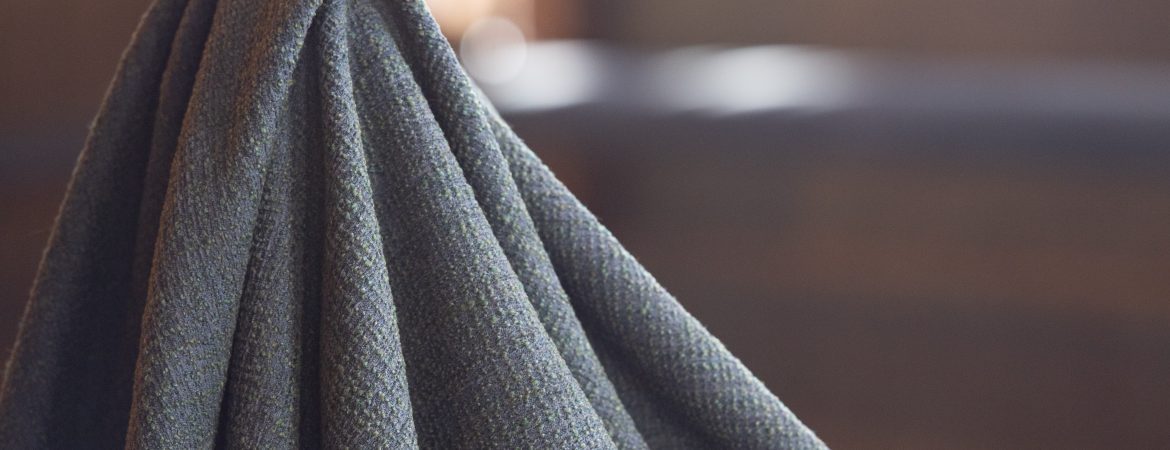
Legislation for sustainable textiles
In this article, we discuss the role of circularity in the furniture industry and how it contributes to the development of sustainable textiles. It is only a matter of time before Extended Producer Responsibility (EPR) also applies to upholstery fabrics. Currently, this legislation already applies to household textiles, so it is inevitable that this extended responsibility will soon be in effect for the furniture industry as well.
What does Extended Producer Responsibility entail?
Extended Producer Responsibility (EPR) for upholstery fabrics means that producers are held accountable for the environmental impacts of their products throughout their entire lifecycle, including the waste phase. This means that producers are responsible for the management and financing of the collection, sorting, recycling, and disposal of textile products at the end of their life cycle. EPR applies to producers of textile products marketed in the EU. This includes both producers located within the EU and producers outside the EU who sell their products in the EU.
Under the framework of EPR for textiles, producers can be encouraged to develop and produce sustainable upholstery fabrics and to take more responsibility for the consequences of their products throughout the entire lifecycle. The goal of EPR is to incentivize producers to implement sustainable design and production processes and to reduce waste and pollution.
Implementing EPR for the production of sustainable fabrics
EPR for upholstery textiles can be implemented in various ways. Some countries, for example, have imposed legal obligations on producers to take responsibility for the collection and processing of discarded textile products. Other countries have established voluntary schemes, encouraging producers to participate in a collective collection and recycling program.
EPR as part of the EU strategy
Within the EU strategy, attention is also given to EPR for textiles. One of the objectives of the strategy is to promote the application of EPR principles in the textile industry. This can be achieved, for example, by imposing mandatory recycling and waste management targets on producers or by providing financial incentives for the development of more sustainable products and production methods.
The role of circularity within the EU strategy for sustainable upholstery fabrics is crucial. Circular economy focuses on maximizing the value of resources by keeping materials and products in use for as long as possible and, where possible, reusing, repairing, or recycling materials and products.
Sustainable textiles in the European Union
The textile industry is one of the most polluting industries globally, with significant impacts on the environment and society. Therefore, the European Union has developed a strategy for sustainable textiles to reduce the impact of this industry. This strategy focuses on promoting circular textile production and consumption, with the aim of reducing waste and optimizing the use of resources in an environmentally friendly manner.
Objectives of the EU Strategy
To achieve this, the EU has established various initiatives, including promoting innovation in circular textile production and encouraging the development of sustainable materials and products. Additionally, the EU focuses on increasing the demand for circular upholstery fabrics by consumers, creating awareness, and developing stimulating policy measures, such as green public procurement. Some key objectives of this strategy are:
Promoting sustainable production and consumption of textiles
This includes supporting eco-design, promoting the use of sustainable materials and production methods, and fostering sustainable textile management (such as reuse, repair, and recycling).
Improving traceability of textiles
This includes enhancing the information available to consumers regarding the sustainability of textile products and promoting transparency in the supply chain.
Promoting the circular economy in the textile industry
This includes promoting textile recycling and reuse, reducing waste, and stimulating innovation in textile recycling.
Promoting international cooperation and policy coherence
This includes promoting collaboration between EU countries and other countries, promoting international standards for sustainable textile production, and ensuring policy coherence across different sectors (such as waste management and chemical substances).
The strategy aims to promote sustainability throughout the entire textile industry, from raw material extraction to the final waste phase. It is intended to transform the textile industry into a more sustainable and circular one, taking into account the interests of the environment, society, and the economy. In summary, sustainable textiles are the future.